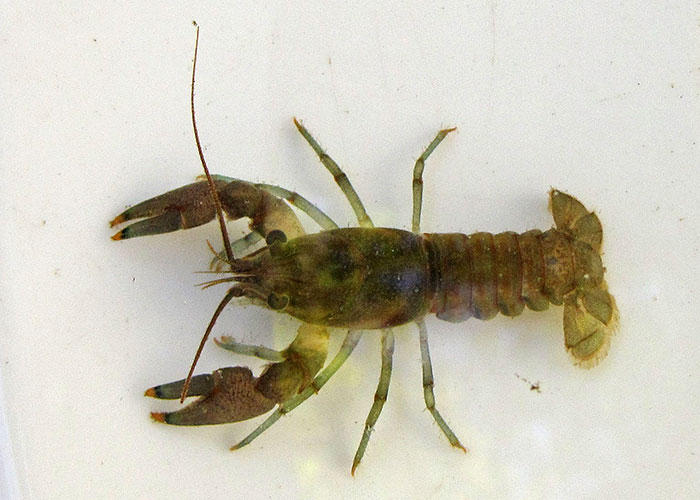

The surprising and important fact that most Australians do not know is that there are almost 140 species of freshwater crayfish in Australia, in 10 genera. The assumption that an unknown crayfish is “just a yabby” is dangerous for the crayfish. It happens all too often and is one of the threatening processes for the group. People who assume that all small crayfish are yabbies may be scooping up endangered species to use for bait. On the other hand, any species in the genus Euastacus (also known as spiny crayfish, which includes the mighty Murray cray) are protected from fishing if they are under a certain size. It is even more dangerous if they think they are yabbies, because the fishing regulations for yabbies are quite generous (you can kill and eat 200 per day). Because many species of freshwater crayfish have limited distributions and are therefore rare and threatened, it is dangerous when the locals consider them to be “common”. My own humiliation is only the tip of the iceberg. How can I be a crayfish expert if I do not even know the “correct” name for their local crayfish? Invariably, whatever word I use I will stand corrected by the local, who has lived their whole life calling that species (insert “common” name here). The answer is simple, I am trying to collect the rare and beautiful species (insert scientific name here) for the purposes of research.īut how do I explain it to someone who thinks that species is a yabby, craybob, lobster or gilgie? If I use the scientific name I sound like a wanker, and if I use the word yabby I will be lying (becuase I almost never go in search of Cherax destructor). Here is a typical scenario: I am poking around in a creek in some remote location, with my laminated scientific collecting permit tucked into the field kit, and a farmer or fisher or curious teenager asks me what I am doing.

It is not that I mind people using the vernacular or that I refuse to use it myself, it is just frustrating to be labelled an idiot by well meaning locals. Those charming little critters with nippers in your local dam may belong to the species Cherax destructor, also known as the common yabby, but they may also be juvenile spiny crayfish (genus Euastacus), adult burrowing crayfish (genus Engaeus) or another species within the genus Cherax, including gilgies, marron and redclaw.Īs a scientist who has worked on Australian freshwater crayfish for decades, the diversity of common names in this group is one of the most frustrating part of the job. Susan LawlerĮveryone knows what a yabby is, don’t they? Well, you would be surprised. The burrowing crayfish Engaeus cymus is not a yabby.


 0 kommentar(er)
0 kommentar(er)
